|
 Secure Site
Secure Site
|
 |
Archive for the 'Meditation Timers' Category
 Mantra Meditation: Utamaro Kitagawa, The Courtesan Hanaogi of Ogiya Mantra Meditation
What is it?
Mantra meditation utilizes the power of sound and vibration to create stillness in the body, calm the nervous system and ultimately transform the mind. The words typically come from ancient spiritual languages, such as Sanskrit or Gurumukhi. The sacred meanings of the words enable you to establish a connection to profound truths that have been spoken for thousands of years, explains Krishna Kaur, a kundalini yoga teacher since 1970 and founding member of the International Association of Black Yoga Teachers (blackyogateachers.com).
What’s it good for?
Because each mantra differs in its meaning and vibrations produced, you can select mantras to create specific effects— such as increasing mental clarity, developing intuition, or reducing anger and stress. Kaur suggests starting with the simple mantra sat nam because it’s easy to say and remember, yet offers profound effects. Sat translates as “truth,” and nam as “identity.” This mantra helps you identify with a universal spiritual truth in which such transient emotional states as fear, anger and doubt fall away.
How long does it take?
Start with three to five minutes, increasing by a minute at a time until you can sit and chant for a full 11 minutes.
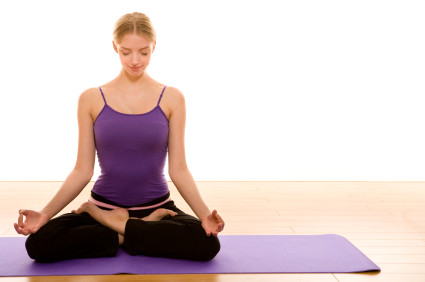 Meditation How do I do it?
1. Sit comfortably in a chair or on the floor with your spine straight to help your breath and the sound it creates flow smoothly. Close your eyes and bring your attention to your breath for a moment to get centered.
2. Take a long, deep inhalation through your nose. As you exhale, utter an extended sat (pronounced “sut”) to almost the end of your breath, followed by a short burst of nam (“nom”). Together, the mantra will sound like “saaaaaaaaaaat nam.”
3. Inhale slowly and evenly, then repeat the mantra as you exhale. Continue this pattern.
4. At the end of your session, inhale and hold your breath for a few seconds, then exhale through your nose. Do this three times, then sit quietly for a moment and feel the energy flow through your body. Open your eyes, stand slowly and carry your sense of calm and clarity with you.
Although meditation can be done in almost any context, practitioners usually employ a quiet, tranquil space, a meditation cushion or bench, and some kind of timing device to time the meditation session. Ideally, the more these accoutrements can be integrated the better. Thus, it is conducive to a satisfying meditation practice to have a timer or clock that is tranquil and beautiful. Using a kitchen timer or beeper watch is less than ideal. And it was with these considerations in mind that we designed our digital Zen Alarm Clock and practice timer. This unique “Zen Clock” features a long-resonating acoustic chime that brings the meditation session to a gradual close, preserving the environment of stillness while also acting as an effective time signal. The Digital Zen Clock can be programmed to chime at the end of the meditation session or periodically throughout the session as a kind of sonic yantra. The beauty and functionality of the Zen Clock/Timer makes it a meditation tool that can actually help you “make time” for meditation in your life.
adapted from naturalhealthmag.com By Frances Lefkowitz
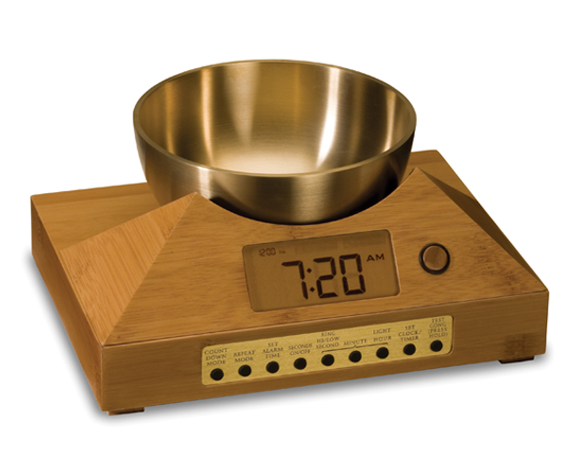 Bamboo Gong Meditation Timer and Alarm Clock Now & Zen, Inc.
1638 Pearl Street
Boulder, CO 80302
(800) 779-6383
Posted in Meditation Timers, Meditation Tools, mindfulness practice
 breathing exercises help relieve stress How simple breath work can lead you to a deep state of relaxation.
Beginning students often ask for instructions on the “right” way to breathe. Alas, there’s no single answer to that question, since the optimal breathing pattern at any given moment depends on the type of practice. Restorative yoga focuses solely on relaxation, though, and emphasizes breathing that creates calm and serene states of being. When you settle into restorative poses, try the following techniques for cultivating breathing patterns that are hallmarks of relaxation and well-being.
MOVE THE BELLY WITH THE BREATH. When we are at ease, the diaphragm is the primary engine of the breath. As we inhale, this domelike muscle descends toward the abdomen, displacing the abdominal muscles and gently swelling the belly. As we exhale, the diaphragm releases back toward the heart, enabling the belly to release toward the spine.
KEEP THE UPPER BODY QUIET. During high-stress times, it’s common to heave the upper chest and grip the muscles in the shoulders and throat. When we’re at rest, the muscles of the upper chest remain soft and relaxed as we breathe, and the real work occurs in the lower rib cage. To promote this type of breathing pattern, consciously relax the jaw, throat, neck, and shoulders, and envision the breath sweeping into the deepest parts of the lungs as you breathe in and out.
BREATHE EASY. Although some breaths may be deeper or faster than others, when we’re relaxed, the alternating rhythm of the inhalations and exhalations feels like a lullaby—smooth, soft, and uninterrupted by jerks and jags. Consciously relaxing into this wavelike, oceanic quality of the breath deepens our sense of peace and ease.
LENGTHEN THE EXHALATIONS. When we feel stressed, our exhalations tend to grow short and choppy. When we’re relaxed, though, the exhalations extend so completely that they are often longer than the inhalations. Some teachers even instruct that if we’re deeply relaxed, each exhalation will be twice as long as the inhalation. To facilitate this, try gently extending each exhalation by one or two seconds. Set your Bamboo Meditation Timer with Chime for 20 minutes and continue this exercise.
PAUSE AFTER EACH EXHALATION. In our most relaxed state, the end of each exhalation is punctuated by a short pause. Lingering in this sweet spot can be deeply satisfying and can evoke feelings of profound quiet and stillness.
LET THE WHOLE BODY BREATHE. When we are at ease, the whole body participates in the breathing process. Imagine a sleeping baby: When he breathes in and out, the belly swells and releases, the hips rock to and fro, the shoulders bob, and the spine gently undulates. This offers a mini-massage for the muscles and organs of the whole body, and turns each breath into a soothing melody that further calms and quiets every cell within.
adapted from Yoga Journal Magazine, by Claudia Cummins
Our Chime Meditation Clock & Timer’s long-resonating Tibetan bell-like chime makes waking up and meditation a beautiful experience – its progressive chimes begin your day with grace.
The Chime Meditation Clock & Timer serves as a countdown and interval timer for yoga, meditation, bodywork, etc.; and it can also be set to chime on the hour as a tool for “mindfulness.”
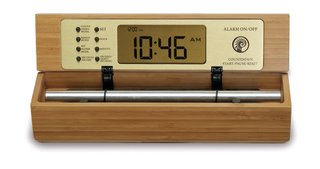 Bamboo Meditation Timers with Soothing Chimes for Breathe Work Now & Zen’s Chime Timer and Alarm Clock Shop
1638 Pearl Street
Boulder, CO
(800) 779-6383
Posted in Meditation Timers, Meditation Tools, mindfulness practice, Well-being, yoga, Yoga Timer, Yoga Timers by Now & Zen, Zen Timers
 A Stillness Practice for before Bedtime Tailgaters. Telemarketers. Teenagers. When you can sum up your day that way, it’s easy to respond with a few choice words of your own. Yet losing your cool rarely feels good or reflects your best character. To maintain your center and stay true to yourself, try this technique from David Simon, M.D., medical director and co-founder of the Chopra Center for Well-Being in Carlsbad, Calif.
Every night before bed, take a few minutes to mentally replay your day. This simple process gives you a different perspective on your actions, along with the opportunity to right any wrongs.
* Set your Zen Timer with Chime for 5 to 10 minutes. Sit up in bed with a pillow propped behind you; bend your knees or cross your legs comfortably on the bed.
* Close your eyes and take a few slow, deep breaths. Observing the in-and-out flow of your breath, allow your body to relax and your mind to quiet.
* Let the day’s events unfold. Picture each one from the time you awoke to the present.
* Notice if your body reacts negatively during any part of the process. A churning in your gut or a nervous response may signal something unresolved.
* Reflect on this particular event and ask yourself if you acted correctly. If anything feels unsettled, note it in a journal with the intention of addressing it the next day.
Revisiting unresolved issues offers you a second chance to do the right thing, Simon says. Maybe a disparaging remark was said about someone you like and respect, but you didn’t speak up at the time. Now you can tell the person who made the remark why such talk makes you uncomfortable.
Over time, annoyances like traffic jams will seem less significant and stressful. “You’ll be able to stay centered and balanced as you encounter the ups and downs of life,” Simon observes. Even better, this nightly evaluation will make you more aware of your goals and how they relate to day-to-day activities. “It will help you honor the person you want to be in the world,” he says.
adapted from Natural Health Magazine by Sarah D. Smith
The Zen Timer & Alarm Clock with Chime serves as a countdown and interval timer for yoga, meditation, bodywork, etc.; and it can also be set to chime on the hour as a tool for “mindfulness.”
 Natural Wood Chime Zen Timers and Alarm Clocks Now & Zen’s Chime Alarm Clock Shop
1638 Pearl Street
Boulder, CO 80302
(800) 779-6386
Posted in intention, Meditation Timers, Meditation Tools, mindfulness practice, sleep, Well-being, Zen Timers
 Meditation is a Quick Fix for Stress Meditating for just 20 minutes a day for five days helped to increase energy and decrease anxiety and stress, as measured by levels of stress hormones, a small study found.
Using the so-called integrative body-mind training method, which comes from traditional Chinese medicine, the study participants reported better attention and control of stress than those relying on relaxation training, which is popular in the West.
Although derived from Chinese medicine, integrative body-mind training uses aspects of other meditation and mindfulness training, the study authors said.
“A meditation method developed in China showed remarkably better performance among those who went through the training compared with those who used relaxation training,” said lead researcher Michael Posner, a psychology professor at the University of Oregon’s Institute of Cognitive and Decision Sciences.
In the study, published in this week’s issue of the Proceedings of the National Academy of Sciences, the researchers assigned 40 undergraduate students from China to either integrative meditation or relaxation therapy.
 Meditation Posner’s group found the students who used integrative meditation for 20 minutes a day for just five days showed greater improvement in conflict scores on a test of stress levels, lower anxiety, depression and anger. Conversely, they displayed more energy, less fatigue, a significant drop in levels of the stress hormone cortisol, and an increase in immunoreactivity, compared with students receiving the relaxation therapy.
Integrative body-mind training was developed in the 1990s, and has been studied in China since 1995. Based on the results from hundreds of adults and children ranging from 4 to 90 years old in China, the practice appears to improve emotional and cognitive performance and social behavior, the study authors said.
Because the study was done in China, Posner said he’s not sure if the same meditation method would work in the United States.
“This is a kind of scientific demonstration about the possible advantage of meditation, at least for the Chinese undergraduates,” Posner said. “It could be culturally specific.”
Posner does think, however, that the study shows it’s possible to change the levels of stress hormones with training.
More information
To learn more about meditation, visit the U.S. National Center for Complementary and Alternative Medicine.
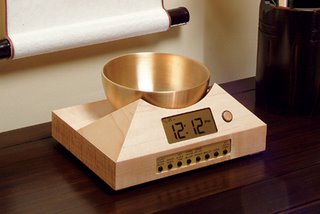 Once you experience the Zen Timepiece's progressive tones, you'll never want to meditate any other way. It serves as the perfect meditation timer. Now & Zen – The Gong Meditation Timer Shop
1638 Pearl Street
Boulder, CO 80302
(800) 779-6383
Posted in Meditation Timers, Meditation Tools, mindfulness practice
 Meditation and Yoga Researchers say they’ve taken a significant stride forward in understanding how relaxation techniques such as meditation, prayer and yoga improve health: by changing patterns of gene activity that affect how the body responds to stress.
The changes were seen both in long-term practitioners and in newer recruits, the scientists said.
“It’s not all in your head,” said Dr. Herbert Benson, president emeritus of the Benson-Henry Institute for Mind/Body Medicine at Massachusetts General Hospital and an associate professor of medicine at Harvard Medical School. “What we have found is that when you evoke the relaxation response, the very genes that are turned on or off by stress are turned the other way. The mind can actively turn on and turn off genes. The mind is not separated from the body.”
One outside expert agreed.
“It’s sort of like reverse thinking: If you can wreak havoc on yourself with lifestyle choices, for example, [in a way that] causes expression of latent genetic manifestations in the negative, then the reverse should hold true,” said Dr. Gerry Leisman, director of the F.R. Carrick Institute for Clinical Ergonomics, Rehabilitation and Applied Neuroscience at Leeds Metropolitan University in the U.K.
“Biology is not entirely our destiny, so while there are things that give us risk factors, there’s a lot of ‘wiggle’ in this,” added Leisman, who is also a professor at the University of Haifa in Israel. “This paper is pointing that there is a technique that allows us to play with the wiggle.”
 Meditation and Yoga Reduce Stress Benson, a pioneer in the field of mind-body medicine, is co-senior author of the new study, which is published in the journal PLoS One.
Benson first described the relaxation response 35 years ago. Mind-body approaches that elicit the response include meditation, repetitive prayer, yoga, tai chi, breathing exercises, progressive muscle relaxation, biofeedback, guided imagery and Qi Gong.
“Previously, we had noted that there were scores of diseases that could be treated by eliciting the relaxation response — everything from different kinds of pain, infertility, rheumatoid arthritis, insomnia,” Benson said.
He believes that this study is the first comprehensive look at how mind states can affect gene expression. It also focuses on gene activity in healthy individuals.
Benson and his colleagues compared gene-expression patterns in 19 long-term practitioners, 19 healthy controls and 20 newcomers who underwent eight weeks of relaxation-response training.
More than 2,200 genes were activated differently in the long-time practitioners relative to the controls and 1,561 genes in the short-timers compared to the long-time practitioners. Some 433 of the differently activated genes were shared among short-term and long-term practitioners.
Further genetic analysis revealed changes in cellular metabolism, response to oxidative stress and other processes in both short- and long-term practitioners. All of these processes may contribute to cellular damage stemming from chronic stress.
Another expert had a mixed response to the findings.
Robert Schwartz, director of the Texas A&M Health Science Center’s Institute of Biosciences and Technology in Houston, noted that the study was relatively small. He also wished that there had been more data on the levels of stress hormones within the control group, for comparison purposes.
However, Schwartz called the study “unique and very exciting. It demonstrates that all these techniques of relaxation response have a biofeedback mechanism that alters gene expression.”
He pointed out that the researchers looked at blood cells, which consist largely of immune cells. “You’re getting the response most probably in the immune cell population,” Schwartz said.
“We all are under stress and have many manifestations of that stress,” Benson added. “To adequately protect ourselves against stress, we should use an approach and a technique that we believe evokes the relaxation response 20 minutes, once a day.”
Use our unique “Zen Clock” which functions as a Yoga & Meditation Timer. It features a long-resonating acoustic chime that brings your meditation or yoga session to a gradual close, preserving the environment of stillness while also acting as an effective time signal. Our Yoga Timer & Clock can be programmed to chime at the end of the meditation or yoga session or periodically throughout the session as a kind of sonic yantra. The beauty and functionality of the Zen Clock/Timer makes it a meditation tool that can actually help you “make time” for meditation in your life. Bring yourself back to balance.
There’s more on meditation at the U.S. National Center for Complementary and Alternative Medicine.
 Yoga and Meditation Timers with Chime Now & Zen – The Yoga and Meditation Timer Shop
1638 Pearl Street
Boulder, CO 80302
(800) 779-6383
Posted in Meditation Timers, Meditation Tools, mindfulness practice
 What is a Listening Meditation? Listening Meditation
What is it?
While many meditation techniques require solitude and silence, this one has you engage with sounds all around you; it invites you to work with the noise instead of fighting it. The intent is to experience sound as vibration, rather than information. “The listening practice is a way of interacting with the environment that allows you to take in the whole energy of the present moment,” says Sally Kempton, a spiritual guide who teaches yoga and meditation at her Carmel, Calif.- based Awakened Heart Meditation (sallykempton.com).
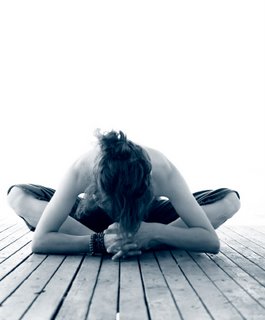 What is a Listening Meditation Good For? What’s it good for?
Especially adaptable and portable, listening meditation can be practiced in crowded, noisy situations—on a bus, at the office—that would hinder other styles. (Kempton once led a listening meditation workshop in the middle of a busy Whole Foods store!) People with particularly chattering minds may need to couple this practice with a mantra or breathing meditation. However, many people welcome the chance to focus outward rather than inward and find that listening meditation is one of the easier techniques to undertake. “You’ll come away from it feeling refreshed, expanded and at ease with your environment,” declares Kempton.
How long does it take?
Try for five minutes at first, then continue adding a minute or two until you can do it for 15 or 20 minutes at a time.
How do I do it?
1. Sit in a comfortable position and close (or half close) your eyes.
2. To get centered and quiet, first go to your breath, noticing but not trying to change it.
3. Now “open” your ears and bring your awareness to the sounds around you. The goal is to listen to the whole range of sounds, without favoring one and without identifying them. Hear the quiet sounds and the silences as well as the dominant sounds.
4. When you find yourself identifying sounds (“there’s a fire engine”; “that’s my neighbor’s TV”), gently redirect your attention from listening to a specific noise back to hearing the whole spectrum of sounds.
5. To end, slowly open your eyes, stand and carry this awareness with you for as long as you can.
adapted from naturalhealthmag.com By Frances Lefkowitz
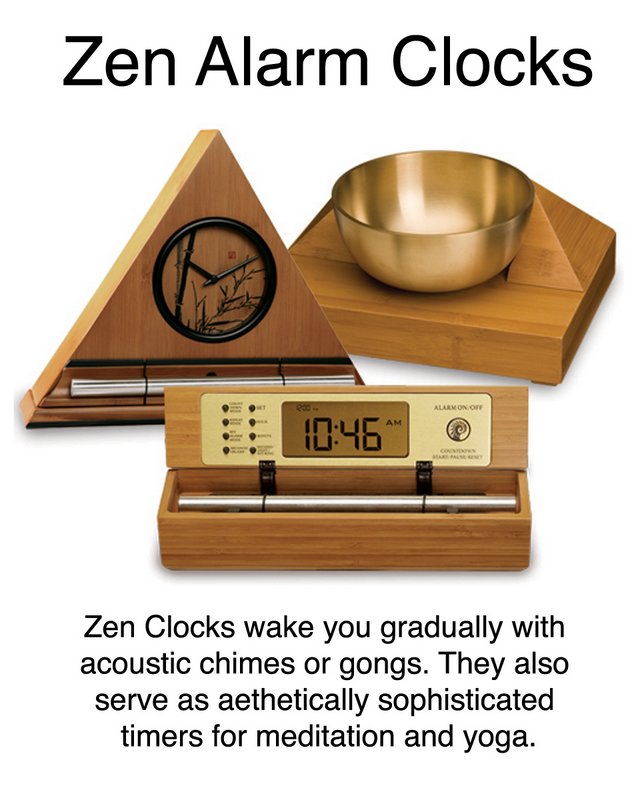 Gong Meditation Timers for a Listening Meditation Now & Zen – The Gong Meditation Timer Shop
1638 Pearl Street
Boulder, CO 80302
(800) 779-6383
Posted in Meditation Timers, Meditation Tools, mindfulness practice
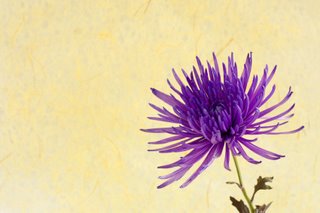 Meditation made easy Basic Breath Meditation
What is it?
The cornerstone of all meditation techniques, this practice centers on something we always do but rarely notice: breathing. “You do not have to do anything with your breath but observe it,” says yoga and meditation teacher Rosen. Eventually, you can work on changing your breath, and sending it into new areas of your torso. But at first, just become aware of each inhalation and exhalation; let your mind track how the breath moves, mapping where it goes to develop an understanding of your own unique “breathing identity.”
What’s it good for?
Use this meditation to get centered anytime and anywhere. “You can retreat into your breath whenever you’re feeling dull, tired or stressed out,” says Rosen.
How long does it take?
Start with 10 minutes at first, then work your way up to 15 and finally 20 minutes.
How do I do it?
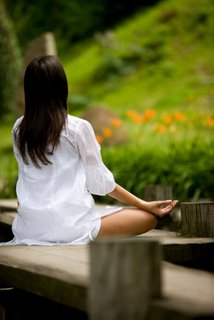 Meditation 1. Sit in a comfortable position with your legs crossed. Or lie on your back with your body straight and a firm pillow or rolled-up towel under your knees. Your arms should rest about 45 degrees from your torso.
2. Breathe quietly in and out through your nose. Feel each breath as it moves through your torso. Feel where in your body the breath is moving and where it is not.
3. Begin to notice how your breath changes as you focus on it, and how your awareness changes in turn. (Rosen likens this process to a feedback loop between the breath and “the witness,” who’s observing it.)
4. When your mind begins to drift, gently bring it back to your breath.
5. Begin to bring your breath into areas of your body that feel dull or “un-breathed.” Imagine your torso as a container, and try actively sending breath into the places it’s not reaching, such as your pelvis or the small of your back. Don’t force the breath, just allow it to follow your consciousness.
6. At the end of your session, wiggle your fingers and toes, then stretch your legs and arms. If you’re lying down, roll over to one side and pause before pushing up to a seated position. Roll up slowly, leading with your torso and raising your head last.
Use our unique “Zen Clock” which functions as a Yoga & Meditation Timer. It features a long-resonating acoustic chime that brings your meditation or yoga session to a gradual close, preserving the environment of stillness while also acting as an effective time signal. Our Yoga Timer & Clock can be programmed to chime at the end of the meditation or yoga session or periodically throughout the session as a kind of sonic yantra. The beauty and functionality of the Zen Clock/Timer makes it a meditation tool that can actually help you “make time” for meditation in your life. Bring yourself back to balance.
adapted from Naturalhealthmag.com By Frances Lefkowitz
Now & Zen – The Gong Meditation Timer Shop
1638 Pearl Street
Boulder, CO 80302
(800) 779-6383
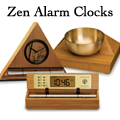 Meditation Timer with Gongs and Chimes 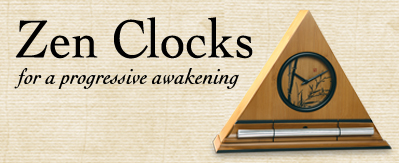 Meditation Timers and Alarm Clocks with Gentle Sounds
Posted in Meditation Timers, Meditation Tools, mindfulness practice
 Mindfulness Meditation Mindfulness Meditation
What is it?
“Mindfulness meditation is not about achieving bliss or tranquility,” explains Sharon Salzberg, co-founder of the Insight Meditation Society (dharma.org) in Barre, Mass. and author ofLovingkindness: The Revolutionary Art of Happiness (Shambhala). “Rather, its aim is to see things as they really are more clearly.”
What’s it good for?
Mindfulness meditation is a form of “mind training,” says Salzberg. Bringing direct awareness to drinking a cup of tea, for instance, means that you really feel the warmth of the cup in your hands, and really taste the sweetness or the bitterness in your mouth. This applies to our emotional states, too—observe with awareness and perceive more accurately what your experience really is.
How long does it take?
Start with five minutes daily. Gradually add a few minutes to your session each day until you can sit for 20 minutes.
How do I do it?
1. Sit in a comfortable position on a pillow, chair, couch or floor.
2. Listen to the sounds around you while you relax. Practice letting the sounds come and go without holding on to them or pushing them away.
3. As you inhale, think “in”; as you exhale, think “out.” Let this action be a kind of home base.
4. When your mind drifts and thoughts start to wander, pay attention to what comes up. You may be aware of a pain in your shoulder, for instance, or think of an argument from the night before. Acknowledge this thought or feeling, spend a moment with it and then bring your awareness gently back to your home base. Rather than rushing past the new sensations you experience, bring your full awareness to them.
5. If you find yourself getting stuck in an emotion or sensation, it may help to put a mental label on it, to identify it as “anger” or “pain.” Then bring your awareness back to your breath.
6. The traditional way to end this meditation is to acknowledge the positive energy you’ve created and to dedicate it to others. Try saying: “May the merit of this practice be dedicated to all beings everywhere.” Stand, and continue to practice mindfulness as much as you can throughout the day.
 Mindfulness Practice - Meditation Use our unique “Zen Clock” which functions as a Yoga & Mindfulness Timer. It features a long-resonating acoustic chime that brings your meditation or yoga session to a gradual close, preserving the environment of stillness while also acting as an effective time signal. Our Yoga Timer & Clock can be programmed to chime at the end of the meditation or yoga session or periodically throughout the session as a kind of sonic yantra. The beauty and functionality of the Zen Clock/Timer makes it a meditation tool that can actually help you “make time” for meditation in your life. Bring yourself back to balance.
adapted from naturalhealthmag.com By Frances Lefkowitz
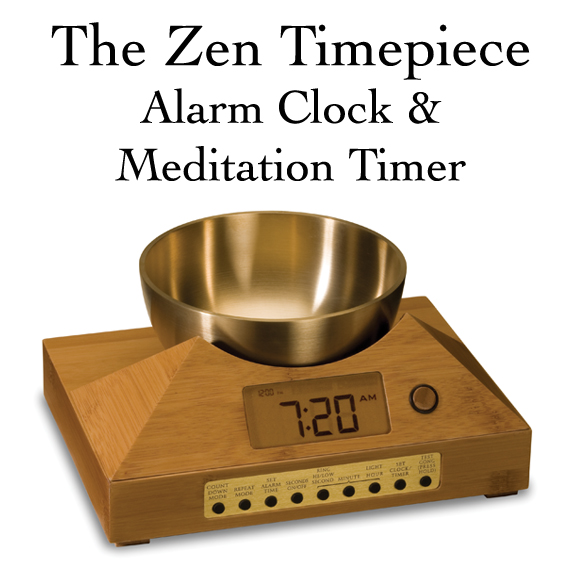 Mindfulness Meditation Timer and Alarm Clock with Gong Now & Zen – The Gong Meditation Timer Shop
1638 Pearl Street
Boulder, CO 80302
(800) 779-6383
Posted in Meditation Timers, Meditation Tools
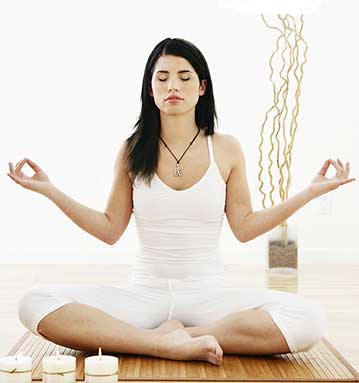 Meditation for Insomnia If you’re tossing and turning and having trouble getting a good night’s sleep, you may want to consider meditation, researchers suggest.
People with primary insomnia reported that they slept better after trying meditation, according to a new study to be presented June 9 at SLEEP, the annual meeting of the Associated Professional Sleep Societies, in Seattle.
Primary insomnia is described as difficulty getting to sleep or staying asleep over a time period of at least one month, according to the U.S. National Institutes of Health.
While most insomnia occurs along with another physical or mental illness or disorder, or as a side effect of medications or other substances, primary insomnia occurs on its own.
In the study, researchers divided 11 participants aged 25 to 45 with chronic primary insomnia into two groups. One group participated in Kriya Yoga — a form of meditation that helps an individual focus internalized attention and can reduce arousal — as well as health education.
The other group received information about improving health through exercise, nutrition, weight loss and stress management but did not participate in meditation.
After two months, the meditation group reported improvements in sleep quality, how long it took to get to sleep, total sleep time, total wake time, sleep efficiency and depression, the researchers reported.
Primary insomnia is believed to be a problem of hyperarousal, with high levels of arousal noted 24 hours a day, said lead study author Dr. Ramadevi Gourineni, director of the insomnia program at Northwestern Memorial Hospital in Evanston, Ill.
“Results of the study show that teaching deep relaxation techniques during the daytime can help improve sleep at night,” Gourineni said in a news release from the American Academy of Sleep Medicine.
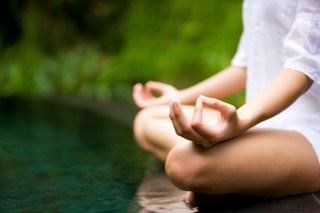 Meditation Pose for Insonmnia About 9.4 percent of U.S. residents, or an estimated 20 million people, try meditating during a 12-month period, according to a 2007 study by the National Center for Complementary and Alternative Medicine. People reported using meditation for various health problems, including anxiety, pain, depression, stress and insomnia.
A 2007 review of the scientific literature found some evidence that meditation is associated with health benefits, possibly by causing heart rate and breathing to slow, improving blood flow and reducing activity in the sympathetic nervous system (the body’s fight-or-flight mechanism).
Our unique “Zen Clock” features a long-resonating acoustic chime that brings the meditation session to a gradual close, preserving the environment of stillness while also acting as an effective time signal. The Digital Zen Clock can be programmed to chime at the end of the meditation session or periodically throughout the session as a kind of sonic yantra. The beauty and functionality of the Zen Clock/Timer makes it a meditation tool that can actually help you “make time” for meditation in your life.
More information
The National Center for Complementary and Alternative Medicine has more on meditation and health.
SOURCE: American Academy of Sleep Medicine, news release, June 9, 2009
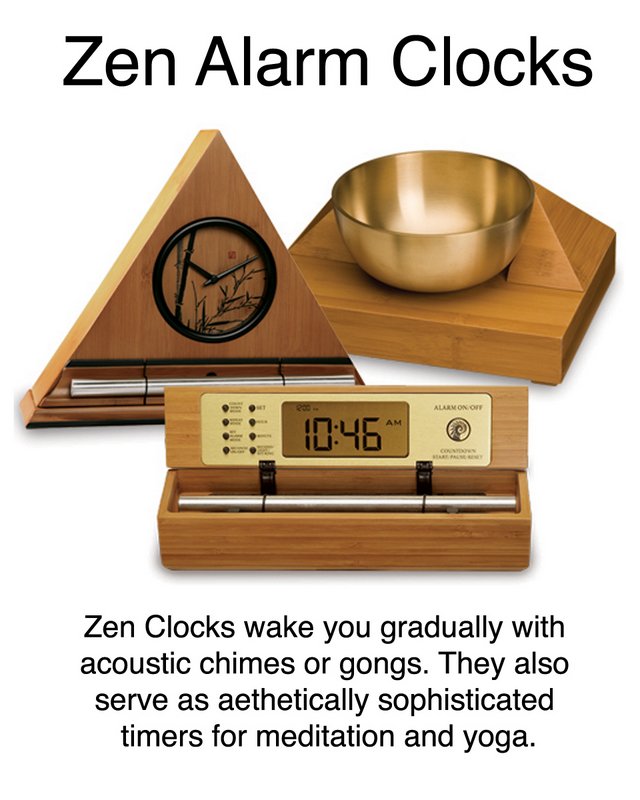 Practitioners usually employ a quiet, tranquil space, a meditation cushion or bench, and some kind of timing device to time the meditation session. Now & Zen – The Chime Meditation and Alarm Clock Shop
1638 Pearl Street
Boulder, CO 80302
(800) 779-6383
Posted in Meditation Timers, Meditation Tools, mindfulness practice
 Meeting Challenges with An Open Heart Reach deep, and find your own inner balance in the midst of crisis
Most of us understand about life being tough, and what it means to be, at least occasionally, on the losing side of things. The end of a relationship, standing helpless as loved ones suffer health problems, experiencing personal financial devastation, or even the grief of losing a job can be debilitating in their intensity, and staggering in their scope. Just switching on the news reveals that if we share nothing else as a world community, we share this one thing: No life is without its own, unique set of tests and troubles. Keeping an open heart in the midst of life’s challenges might be difficult, but it can also be a powerful tool for coping.
Success is not final, failure is not fatal: it is the courage to continue that counts. —Winston Churchill
Courage is easy to talk about, but where does it come from, and where do we find the ability to climb out of bed in the morning when the only thing that’s recognizable is the feeling of despair? Popular wisdom tells us that it’s not what life presents us that’s important, but the way in which we choose to respond. That may be perfectly true, but it doesn’t make it easy. Mariana Caplan, Ph.D., is a counselor, professor of yogic and transpersonal psychologies, and the author of seven books in the fields of psychology and spirituality, including Halfway Up the Mountain and To Touch is to Live (Hohm, 2002), and Eyes Wide Open: Cultivating Discernment on the Spiritual Path (Sounds True, 2009). Caplan, who has lived in villages in India, Central and South America, and Europe, holds degrees in cultural anthropology, counseling psychology, and contemporary spirituality, and has spent years researching and practicing the world’s great mystical traditions. She currently resides in the San Francisco Bay area and teaches at the California Institute of Integral Studies.
“There are many things we cannot control,” acknowledges Caplan, “but one thing we can control, or at least cultivate, is our attitude towards ourselves, our lives, and the situations that life presents. It is through the cultivation of discernment that we are able to have more choice not in terms of what life gives us, but whether we experience these things with gratitude and openness, or whether we fall into defeat.”
Not that this means that it’s an easy task, or that all hardships offer the same challenges. Losing a child, losing a job, and losing a home through foreclosure produce understandably different responses. The sudden illness of a family member or friend, or the diagnosis of a serious health condition of our own likewise elicits a whole host of reactions, and requires any number of considerations.
Respected retreat leader James Finley, Ph.D., and author, along with Carolyn Myss, of the learning course Transforming Trauma (Sounds True, 2009), suggests that in times of extreme difficulty, it’s essential to consider the details of what, exactly, is happening to us, and to accept that we’re very likely doing our best to understand and work through the situation. This, he explains, is the reality of crisis management—what are reality-based ways of understanding the moment, what are the options, and what can be done to provide the best possible outcome?
“We have to consider the impact of the event on our sense of security and identity,” says Finley. “The crisis or trauma has accessed us, and has threatened our sense of who we are. This is the interior dimension of the crisis. This has to do with understanding what trauma is—it’s the experience of being powerless. It’s important to establish a boundary between us, and what is being inflicted or is about to inflect harm. That applies to whatever the crisis is: a medical diagnosis, a relationship falling apart, or a natural disaster.”
The world is full of suffering, it is also full of overcoming it. —Helen Keller
Successfully transcending suffering, says Finley, requires moving toward our centers, and grounding ourselves in this space. This, he says, is where spirituality comes in. “Spirituality is a resource in healing,” he continues. “It helps us to stay grounded in the midst of the circumstances of life, and until you are grounded, you can’t effectively deal with the event. We may have to ride the waves of the storm, but it keeps our boat from tipping over. We might not be able to stop the storm, but maybe we can do something to stabilize ourselves, and ride it though.”
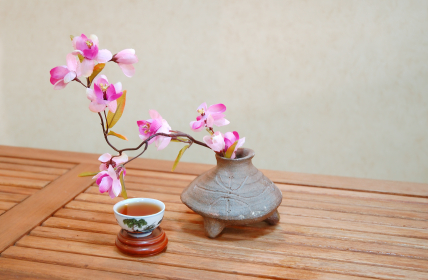 . Once you experience the Zen Timepiece's progressive tones, you'll never want to meditate any other way. It serves as the perfect meditation timer. First, says Finley, find what it is in your life that serves as your point of contact with the spiritual depth that transcends whatever is happening; the realization that inner peace is not dependent on external conditions. This is personal for each of us. For some, it might be religious faith. For others, it’s a guided program, a loved one, or nature.
“When we get afraid,” says Finley, “our hearts contract, our souls contract. Don’t panic. Pause. Reground yourself. Go to your point of contact to get your bearings. By practicing emotional sobriety, you don’t contribute to the situation in a negative way. Remember to tell yourself this: I’m nothing but the Self this is happening to. But I’m not JUST the Self that this is happening to.”
The second step is to have a spiritual practice. Finley defines this as any act habitually entered into with our whole hearts that serves as a way to keep ourselves grounded, and a way to transcend whatever is happening. If our point of contact is a loving relationship with another person, then our practice is to keep in touch with them. That doesn’t mean endless phone calls or visits. Carrying a photo of that person in our wallet, or keeping one on our desk, will suffice. It’s about keeping them firmly in our minds eye, and sustaining our consciousness of this person.
“If your pint of contact is nature, then your spiritual practice is to go out into the garden, or to keep plants in the house that you can nurture, or even to stop on the way home from work to walk in a park or another place where you can be surrounded by nature,” continues Finley. “If your point of contact is a spiritual teacher, then your practice might be to carry around a few words by them. All of these are points of meditation, and serve as ballast. We learn to ground ourselves this way, by taking part in a physical act. It takes fidelity to do this. Crisis is intense, but if we are sincere, we can slowly stabilize.” Third, we must accept that this groundedness in meditation in of itself does not solve the crisis. If a relationship is falling apart, a tornado has struck, or we’ve learned a loved one has a terminal disease, we are still left to face that reality. We ground ourselves as a resource from which to draw the courage to face whatever the catastrophe is. Crisis intervention includes acknowledging and validating the experience, not denying it or diminishing it.
“So, we ground ourselves at the level of the intensity of the pain,” Finley says. “Once we’re there, then we can move forward from that place. Too often, we get stuck in not just what happened to us, but what the thing that happened did to us.”
Pain is inevitable. Suffering is optional. —Anonymous
“Everybody experiences personal challenges in their lives,” agrees Caplan. “If not at the present moment, then in the future or in the past. I think we need to learn to constantly open to what we are given, to feel the feelings of it, to live it fully. We cultivate a trust in life, even when we don’t feel it, and we keep putting one foot in front of the other. Eventually, everything will change—it is just how things are.”
 Meditation It’s always easier, of course, to consider such things when our lives are humming along in relative harmony, our families are healthy, and our finances are secure. But challenges will come. Hopefully, we’ll discover when we come out on the other side of our experience, however difficult it was, that it wasn’t just painful, but that we have somehow been transformed by it. We may have learned to be more at peace, become more humble, or found a previously untapped inner wisdom. Maybe, by deepening our spiritual practices now, we’ll be that much more prepared should we suddenly be presented with a less happy state of affairs. Just as our bodies benefit from regular physical exercise, perhaps it’s also possible to strengthen and fortify our souls. It seems, at the very least, worth a try.
Use our unique “Zen Clock” which functions as a Yoga & Meditation Timer. It features a long-resonating acoustic chime that brings your meditation or yoga session to a gradual close, preserving the environment of stillness while also acting as an effective time signal. Our Yoga Timer & Clock can be programmed to chime at the end of the meditation or yoga session or periodically throughout the session as a kind of sonic yantra. The beauty and functionality of the Zen Clock/Timer makes it a meditation tool that can actually help you “make time” for meditation in your life. Bring yourself back to balance.
adapted from healinglifestyles.com By Debra Bokur
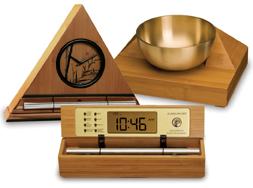 It's exquisite sounds summon your consciousness out of your meditative state with a series of subtle gongs. Now & Zen – The Meditation Timer Shop
1638 Pearl Street
Boulder, CO 80302
(800) 779-6383
Posted in Meditation Timers, Meditation Tools
« Previous Page — « Previous Entries
Next Entries » — Next Page »
|
|
|
|